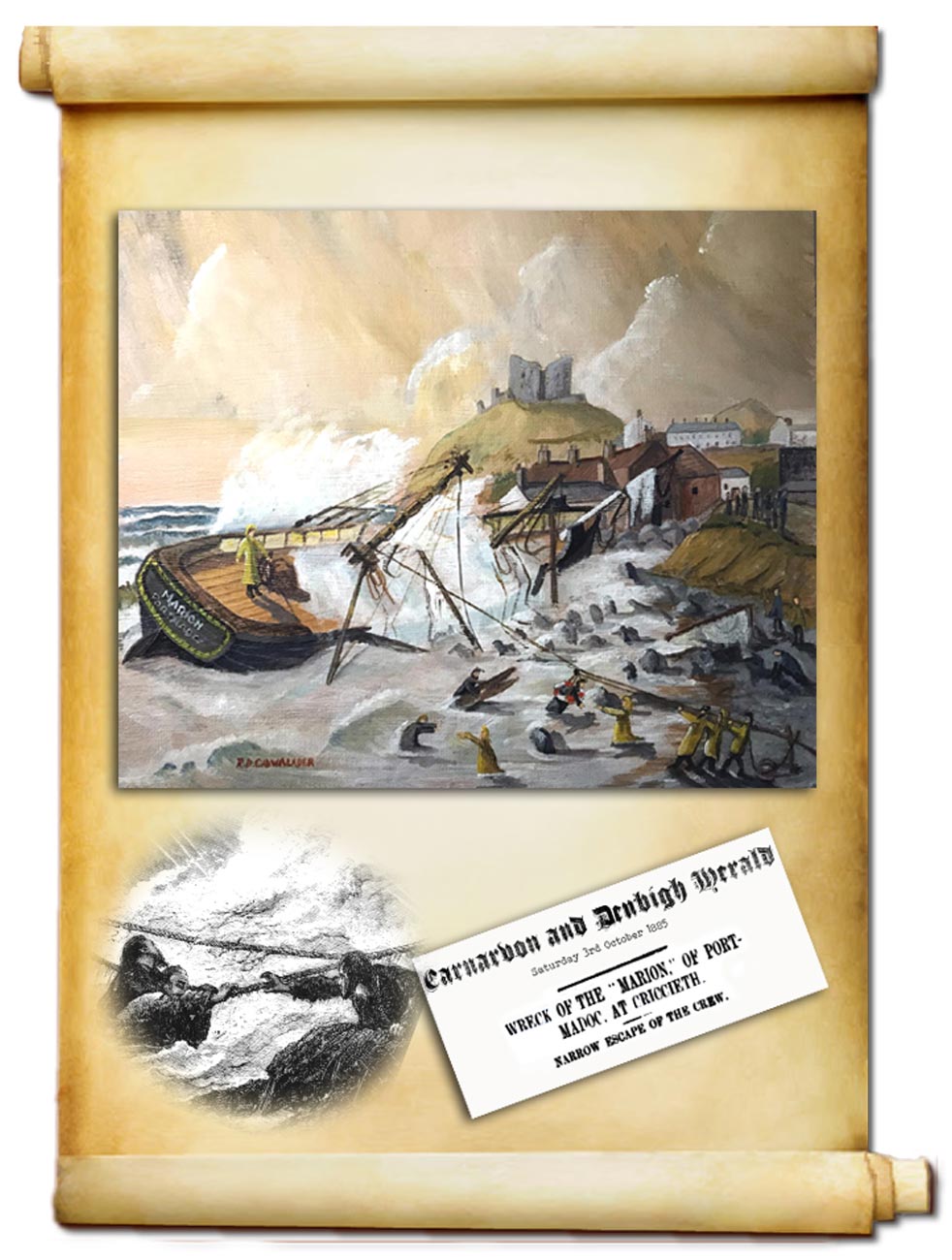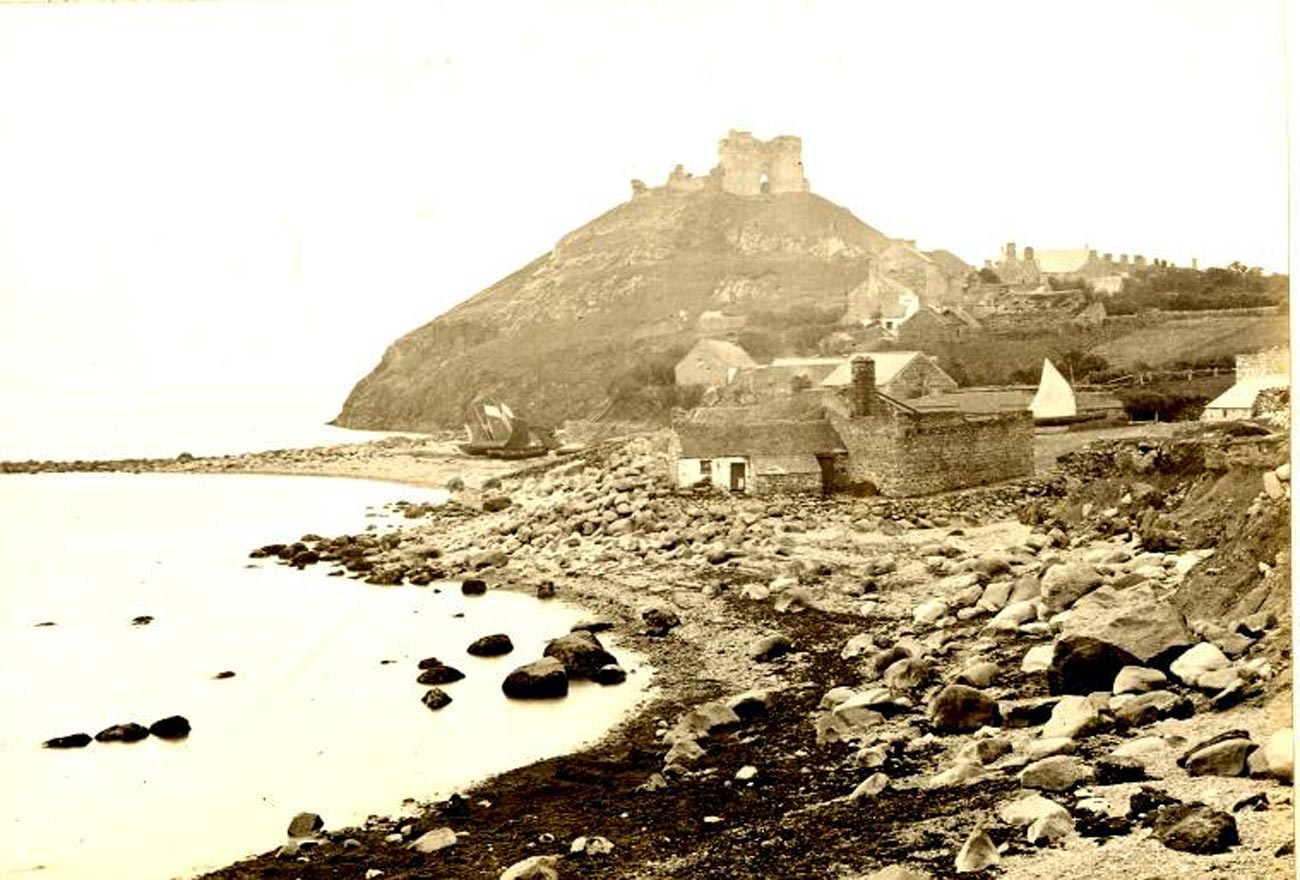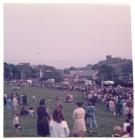Content can be downloaded for non-commercial purposes, such as for personal use or in educational resources.
For commercial purposes please contact the copyright holder directly.
Read more about the The Creative Archive Licence.
Description
Criccieth – Shipwreck of the MARION.
During the 19th century many small ships called at Criccieth. They would have commenced their voyage from Porthmadog, loaded with roofing slates for any port, river or creek around the UK, Northern Europe and the Baltic. They would then work their way back with any cargo or in ballast. Common loads were limestones or culm, a cheap form of small coal pieces which was mixed with clay to burn in the lime kilns. The MARION was typical of these small schooners. She was built in Borth Y Gest in 1853 and had sailed for over thirty years in the slate trade carrying loads of about a hundred tons each voyage.
On the evening of 30th September 1885 she was seen heading in to Criccieth in deteriorating weather. She had lost her main boom so was unable to tack to St Tudwal’s Road where ships usually sheltered. With a crowd watching, she managed to beach under Ty’n y Gelaist (Beach Bank). As the tide ebbed a start was made of unloading her in the hope that, when empty, she would be driven further up the beach and be saved. Unfortunately, during the night, the wind increased to a full gale and when the tide came in the next morning she was dashed against the big boulders on the beach. Captain Roberts was the last to leave and it was said that he wept to see his ship, which had been his home for many years, smashed to pieces.
Report in the Carnarvon and Denbigh Herald 30/9/1885.
The schooner MARION owned and commanded by Captain William Roberts, Portmadoc, was caught by the gale in Criccieth Bay on Tuesday night. She was run ashore, but the sea dashed over her and caused her to strike so heavily against the big boulder stones on the beach that large holes were made in her starboard side. There being no possibility of any boat living in the sea, the crew were drawn ashore by means of ropes and tackle fastened to the vessel’s mast and to the shore. Captain Roberts for a long time would not leave the ship, till he saw that she was going to capsize. Soon after he got ashore the vessel fell over and became a total wreck. She was loaded with limestone and was not insured.
Image 2: This photo shows the big boulders on the foreshore were the MARION was wrecked.








Do you have information to add to this item? Please leave a comment
Comments (0)
You must be logged in to leave a comment